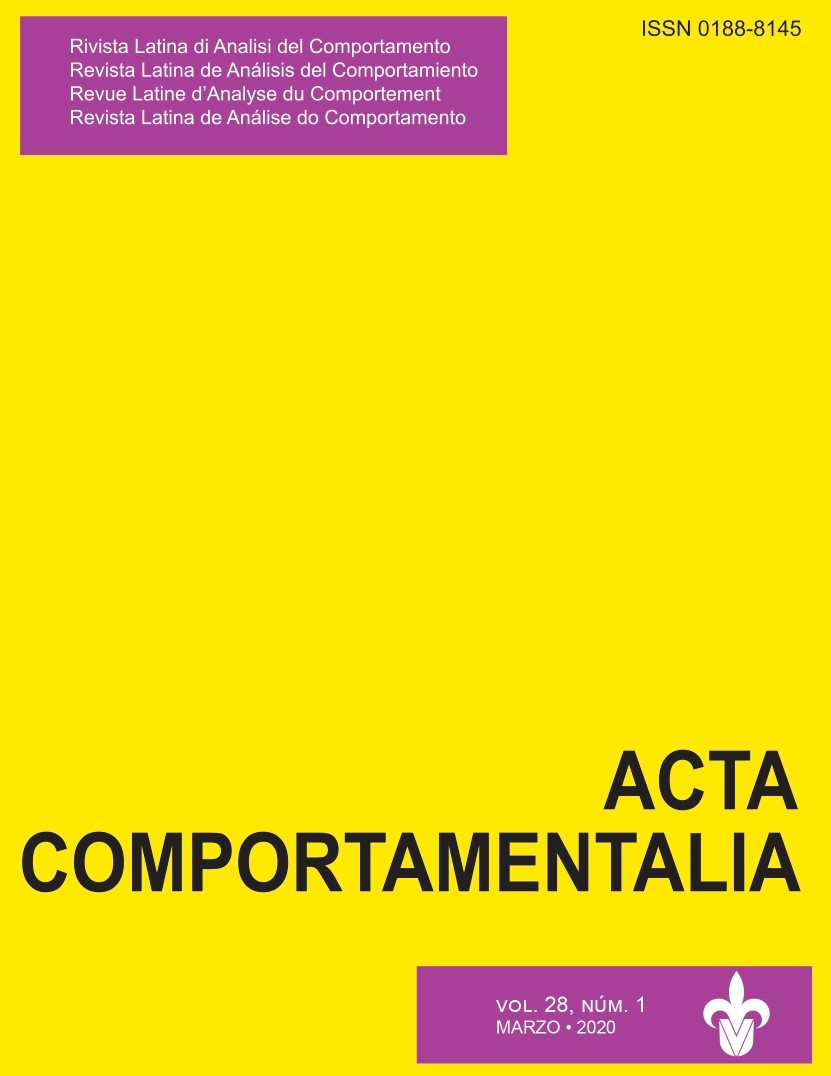Efeito da modalidade de sinal na emergência de equivalência e de respostas verbais expressivas com LIBRAS
DOI:
https://doi.org/10.32870/ac.v28i1.75182Palabras clave:
Brazilian Sign Language, verbal behavior, stimulus equivalence, hand signs, mimetic, codic.Resumen
The objective of this study was to evaluate the effect of teaching receptive responses, using a matching to sample procedure (MTS), in the emergence of equivalence relations between printed words, written signs and pictorical signs of Brazilian Sign Language (LIBRAS). The study also investigated the effect of two different presentation modalities of signs (figures and video), during teaching conditions, in the emergence of two types of expressive responses: codic (signs controlled by figure or written signals) and mimetic (signs controlled by the same sign). Six undergraduate listeners students, between 18 and 31 years old, were divided into two groups which differed in relation to the modality of the visual LIBRAS’ signs used during training and tests. For Group V, LIBRAS’ signs were presented in the form of videos; for Group F, the same signs were presented in the form of pictures. Both groups were exposed to equivalence-based education. After a pre-test, participants were exposed to a three-phase computerized procedure, each consisting of a training sequence (AB or A’B and AC or A’C), signaling probes (AD or A ‘D, BD and CD) and equivalence test (BC and CB). After the end of the third phase, all participants were exposed to a general equivalence and expressive signaling response test. Three sets of stimuli were used in each phase; sets A/A’ were composed of LIBRAS’ signs in the form of figures (set A, for Group F) or video (set A’, for Group V); set B was formed of words written in Portuguese and set C was composed of words written in SignWriting. The figure signs were selected and reproduced from the Trilingual Illustrated Encyclopedic Dictionary of the Brazilian Sign Language. All participants formed nine threemember equivalence classes compound by LIBRAS’ signs, written words in Portuguese and in SignWriting. Expressive signaling responses controlled by written Portuguese words, SignWriting (codic) and signs (mimetic) were observed. These results replicate those of previous studies and suggest that MTS procedure is sufficient for the emergence of signaling responses (codic). In addition to other studies, more accurate signaling responses were observed for Group V. This result shows the differential effect of the sign modality on the emergent signaling response. The study highlights the potential of computerized teaching programs, with MTS procedures, in promoting learning of signaling repertoires that were not directly taught.
Descargas
Descargas
Publicado
Cómo citar
Número
Sección
Licencia

<a rel="license" href="http://creativecommons.org/licenses/by-nc-sa/4.0/"><img alt="Licencia de Creative Commons" style="border-width:0" src="https://i.creativecommons.org/l/by-nc-sa/4.0/88x31.png" /></a><br />Este obra está bajo una <a rel="license" href="http://creativecommons.org/licenses/by-nc-sa/4.0/">licencia de Creative Commons Reconocimiento-NoComercial-CompartirIgual 4.0 Internacional</a>.






